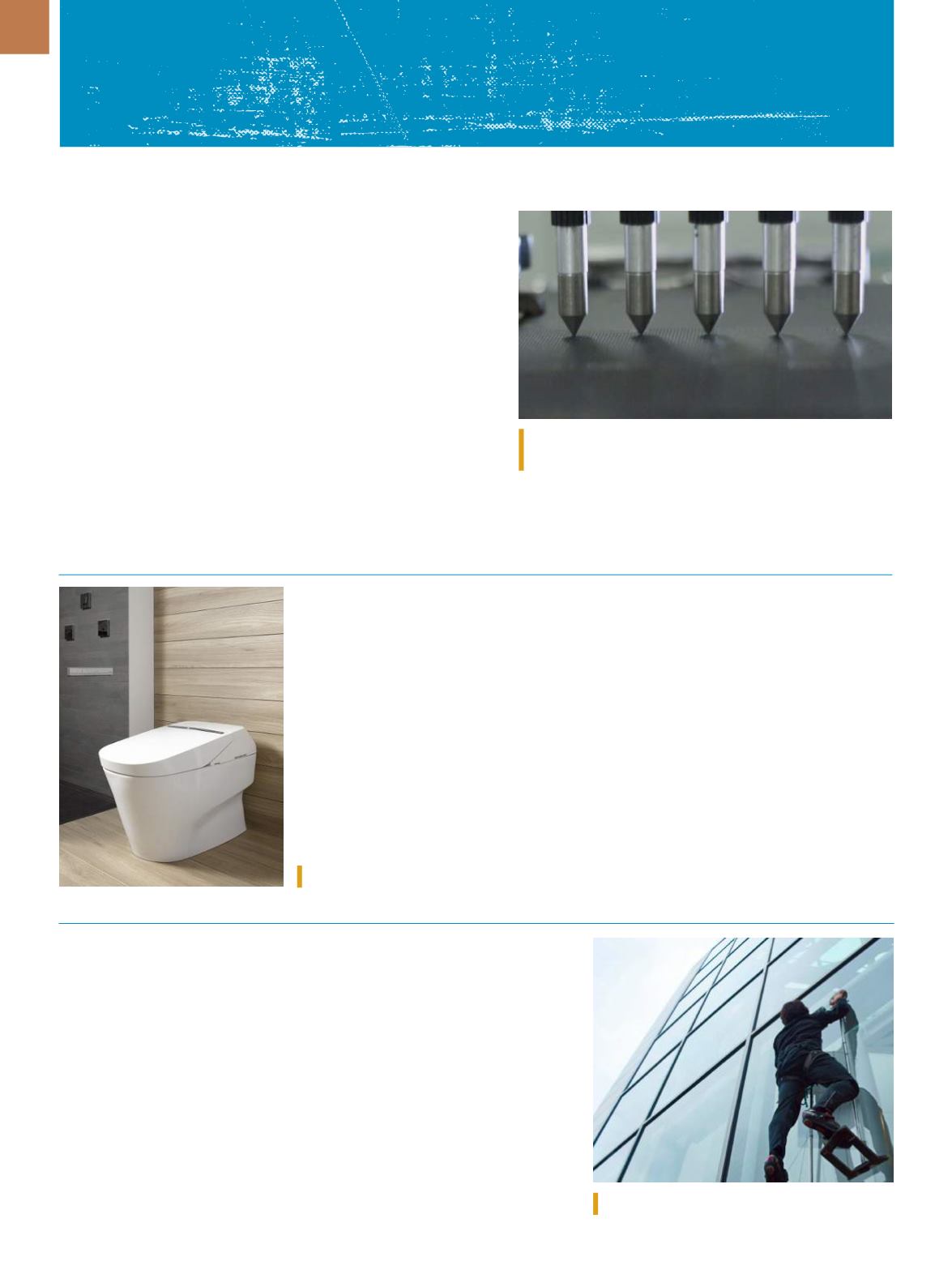

8 4
STRESS RELIEF
A D V A N C E D M A T E R I A L S & P R O C E S S E S | A P R I L 2 0 1 6
SCRATCH AND SNIFF
What makes a vehicle rough and tough? A powerful engine or
hardy suspension might come to mind, but the interior of an auto-
mobile also needs to withstand a variety of stresses and strains. To
determine the durability of fabrics, leathers, and plastics used inside
vehicle cabins, engineers at Ford Motor Co., Detroit, subject these
materials to a series of tests where they are stretched, scratched,
snagged, sniffed, and stained to see how they will stand up to wear
and tear. As part of this gauntlet, Ford plastics undergo ordeals like
the “five-finger scratch test,” where samples are scraped with a
claw of pointed metal rods at different levels of force. In the “soil
and cleanability test,” substances like coffee, grease, and mud are
splashed onto seat fabrics to evaluate stain resistance. And in the
medieval style “mace snagging test,” seat fabric strength is evaluat-
ed by spinning samples on rollers 600 times while striking them repeatedly with a spikey iron ball. Material samples are also sealed
in hot, humid jars and then sniffed by a team of “approved odor assessors” to help the engineers achieve interiors free of disturbing
smells.
youtu.be/J9gyq9dGnUE.
CLIMB LIKE A GECKO
Researchers at Stanford University, Calif., developed a handheld device
covered with 24 adhesive tiles that let humans scale glass walls like Spider-Man.
This handheld “gecko pad” is connected to special degressive springs that be-
come less stiff the further they are stretched, allowing large loads to be shared
evenly across every adhesive patch. Like natural gecko adhesive, the device’s
synthetic adhesive can be turned on and off as you climb—release the load ten-
sion, and the pad loses its stickiness. A team at the University of Cambridge,
UK, recently lamented that under normal biological conditions, geckos are the
largest animals that can climb walls—40% of a human body would need to be
covered in adhesive to support its own weight. The Stanford team says that with
a little human engineering, wall climbing can be scaled up.
stanford.edu.
TECH-SAVYY TOILET CLEANS UP
The Neorest 750H
intelligent toilet from Toto, Japan, might be smarter than you are. It
sports sensors that decide when it should open, close, and flush, plus a heated seat at an
ergonomic 17 in. from the floor. The bowl washes itself with a dual-jet, tornado flush action
and a catalytic deodorizer, and washes its user with a spritz of warm, aerated water followed
by a puff of toasty air. The toilet stays tidy with a pre-usemist that prevents waste adherence
and a post-flush mist of slightly acidic, electrolyzed water that keeps things cleaner longer.
The bowl’s coating of titanium dioxide and zirconium not only imparts a pearly sheen, but
also accelerates decomposition of organic substances when a UV light turns on inside the
closed lid, triggering a photocatalytic reaction. The 750H consumes a single gallon of water
per flush (gpf) at full force and 0.8 gpf in light mode.
totousa.com.
Toto’s Neorest 750h intelligent toilet.
The five-finger scratch test is used to scratch plastics to see
howmuch abuse they can take. Courtesy of Business Wire.
Glass wall climbing test. Courtesy of Eric Eason.


















